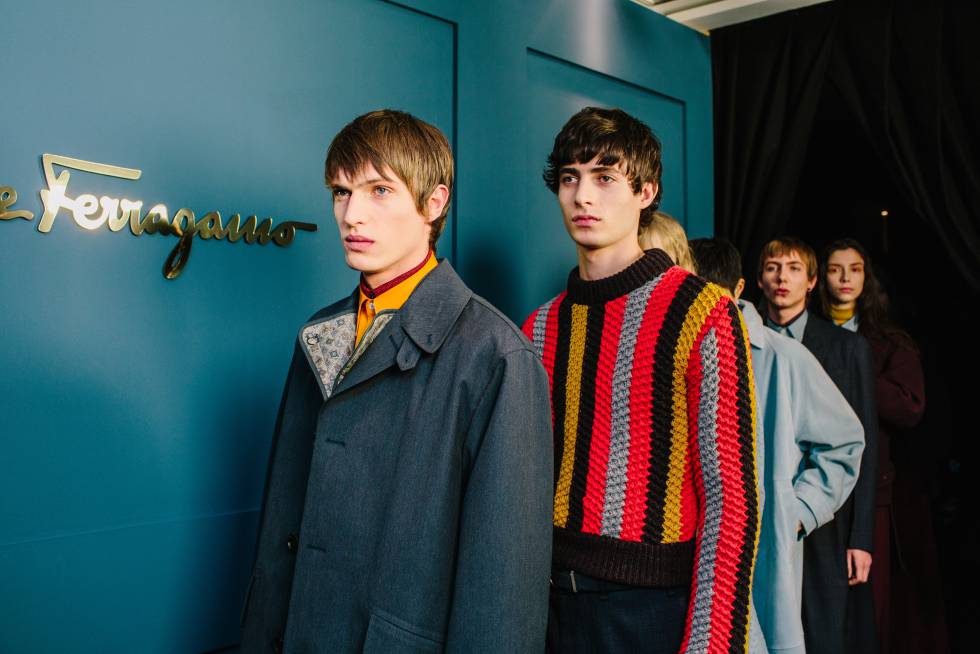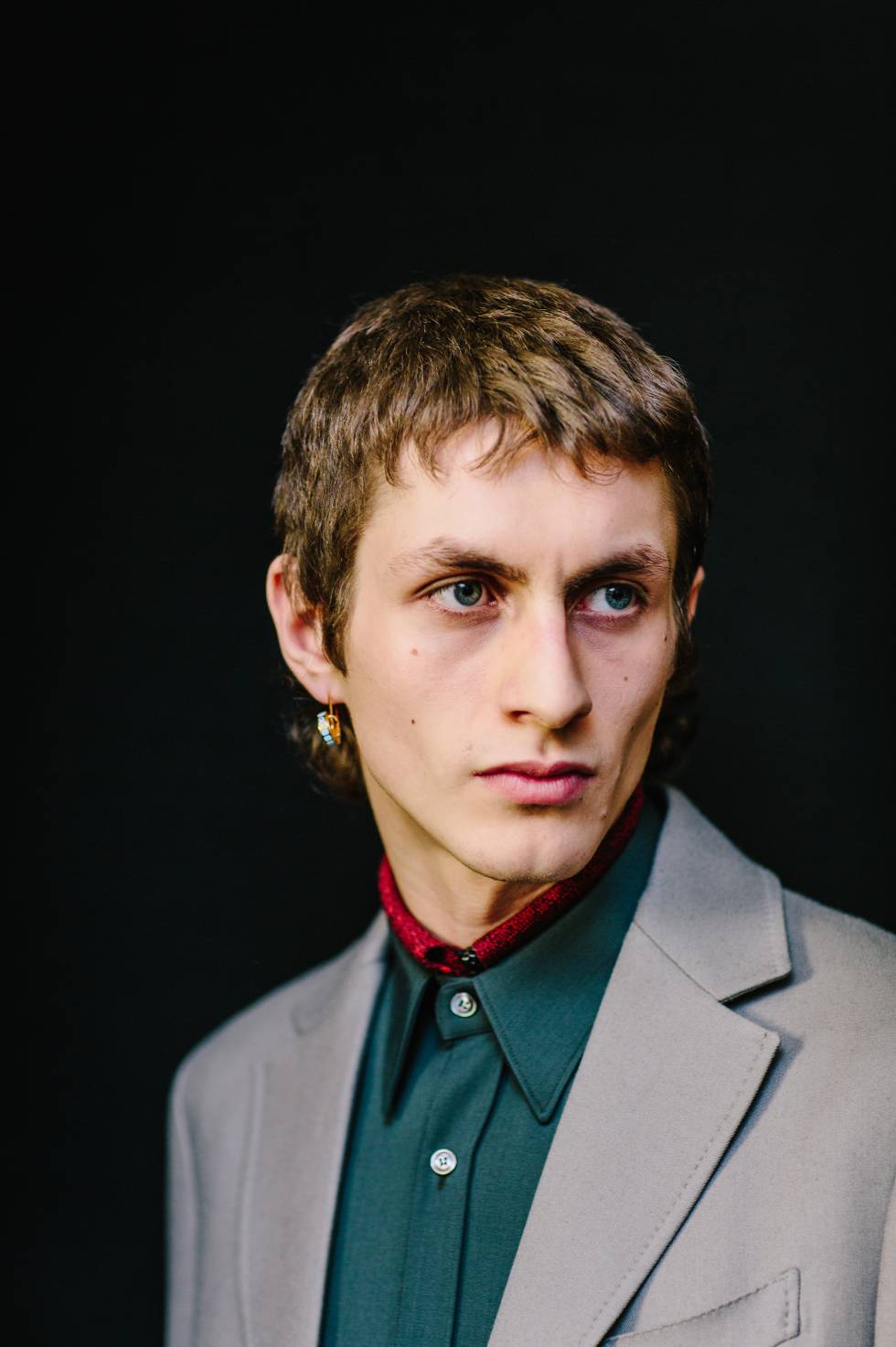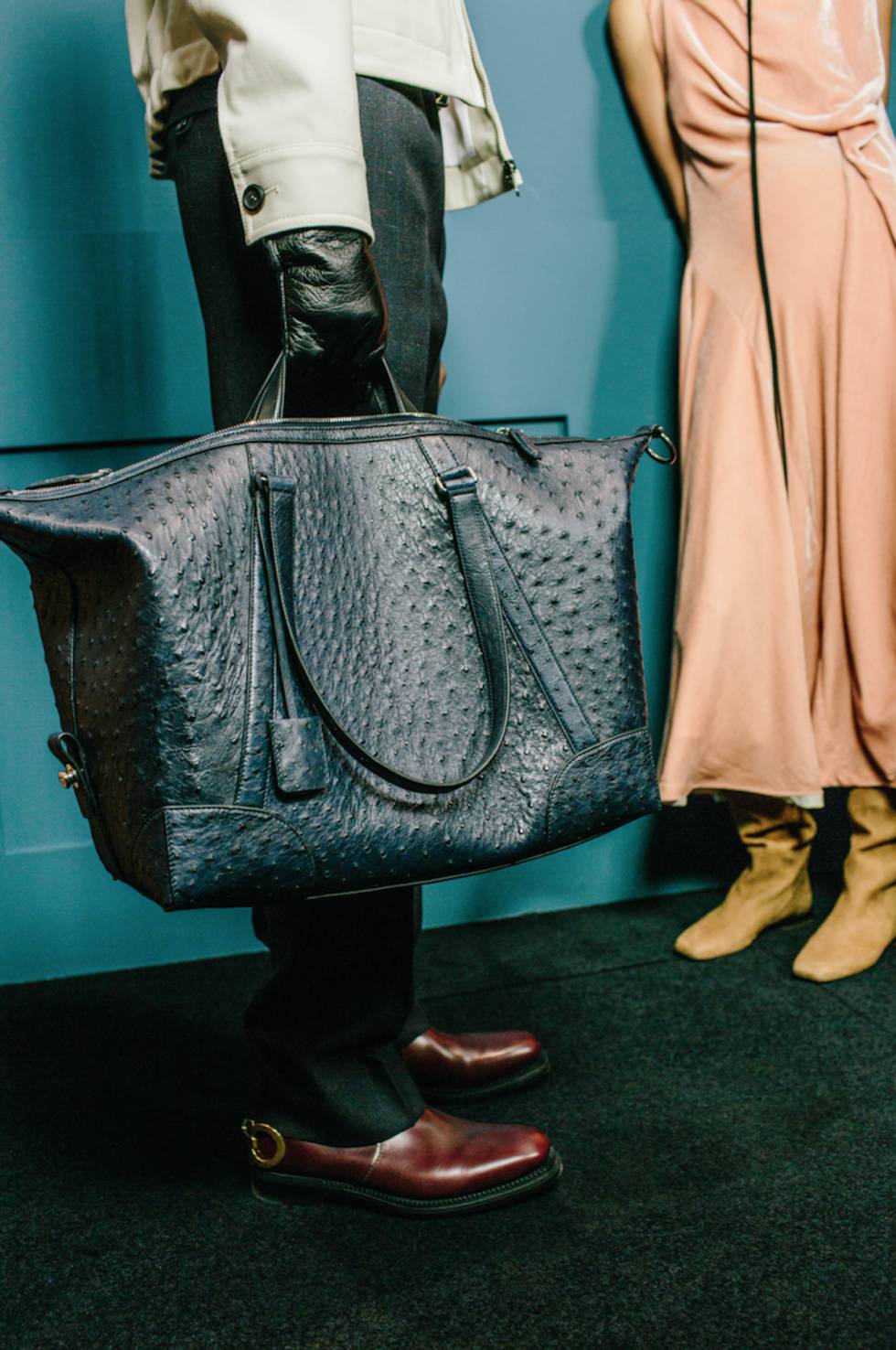Everything
![]()
From the window of Guillaume Meilland’s office you can see a car park, a car dealership and a furniture store. The headquarters of Salvatore Ferragamo, the firm whose men’s fashion collections have been designed since November 2016, is located in Osmannoro, an industrial area located between two realities. It is enough to drive half an hour to find yourself in the midst of Tuscan nature or in the heart of Renaissance Florence, depending on the direction you take. And geography, for Meilland, is not an afterthought. “The biggest advantage is our proximity,” he says. “We are in Tuscany and everything is close: artisans, manufacturers and suppliers. Clothes and shoes are made in this area. That immediacy changes everything.”
Until his signing by the Florentine firm, Meilland (35 years old) kept his progressive career out of the spotlight. He did internships at Louis Vuitton, worked at Saint Laurent and finally at Lanvin, where he remained for eight years as Senior Menswear Designer. It was then when he received the call from Salvatore Ferragamo and decided to accept the challenge. “Before working here, I had, like everyone else, some very clear images of the house of Ferragamo, like the logo that Lucio Venna created for Salvatore in the thirties. And he also knew many of the women’s shoes that he designed, because they are icons whose transcendence goes beyond fashion, “he says.
Salvatore Ferragamo, an icon deeply stood in the history of Italian fashion, is today a luxury firm with 685 stores around the world. Its origin lies in the meteoric history of Salvatore Ferragamo (1898-1960), a child prodigy born in a town in Campania who began as an apprentice shoemaker at age nine, opened his own workshop at 12, emigrated to the United States to the 15 and at the age of 20 I already designed shoes for all of Hollywood. In 1927 he returned to Italy, becoming not only a successful businessman but also the most famous cobbler of the century, and settled in Florence, where he acquired the Palazzo Spini-Feroni, a 14th-century monument. From there he took the reins of the business until his death in 1960.
From that moment on, his children took over the company and and made the first step outside of just footwear, launching lines for women’s (1965) and men’s fashion (1975). “It is said that at Ferragamo that fashion is the accessory for your accessories, and it is quite logical, because Ferragamo sells shoes first of all. We have to start from that base”, explains Meilland, who has taken on the challenge naturally. “Actually, the silhouette of the man starts in the shoes, so it’s interesting to work that way. Footwear conditions everything. It is very different how a man walks if he has more or less heel. As a designer, I have to take it into account.”
Since he arrived in Florence, his daily work is largely a work of dialogue: with the Ferragamo family – his widow, Wanda, continues to come every day to his office in the palazzo – with his counterpart, the designer Paul Andrew – al front of the female line – as well as a the legacy of the founder of the saga.
Meilland designs menswear building on the philosophy of a man who only made women’s shoes, but the direction is proving fruitful. “I decided to take things with respect, without haste, because it is a family business and I wanted to soak up its history before working.” He says he has found brilliant ideas to apply to his collections. “Beyond the architectural, Salvatore Ferragamo was also someone very imaginative and creative who enjoyed using unexpected materials in a luxury home. Where others used crocodile skin, he applied felt or embroidery. And that can be transferred to the prêt à porter. It is a perspective that interests me a lot, “he says, referring to the creative genius of the man who knew how to imagine a vertiginous and colourful platform for Judy Garland – the Rainbow model – a sandal with rhinestones and embroideries for the Mahahrani of Cooch Behar, futuristic shoes with threads of almost imperceptible nylon and customised models for Rita Hayworth, Audrey Hepburn or Greta Garbo that are now museum pieces.
The other perspective, this much more unexpected, is that of comfort. It was a real obsession for Mr. Ferragamo, who enrolled in a university anatomy course to learn how to make scientifically comfortable shoes. Continuing this dedication sees Meilland use this flexible silhouette in his first three male collections for the house. The first was inspired by the American adventure of Ferragamo, and combined American and Italian elements.

The second, on sale this spring, raises another border dialogue. “It’s my first summer collection here, and I wanted to do something very Italian and understandable immediately. Between France and Italy is the Riviera, so I thought it was a nice way to mix the world of Ferragamo and my own.” Meilland mentions two classics of the summer thriller genre – A Full Sun and Swimming Pool – and explains the tapestry fabric worked to emulate the feel of a towel.
His design team, made up of four people, must juggle the network of suppliers, workshops and craftsmen who make the garments in Italy and also a calendar that includes two collections and two pre-collections per year, but Guillaume finds a respite from the world noise.
“When I was hired, I made the decision to leave Paris and settle here,” he explains. “And to make it more obvious, I moved to the countryside. In Paris I lived downtown and was ten minutes away from work on a scooter. Here it is just the opposite. Since I left my country to live a new experience, I loved the idea of doing it as an American tourist, especially if we talk about Tuscany. Renaissance Florence and art is just around the corner, but I wanted to take it with some distance, as if I had come to spend a long vacation. Also, I have two daughters, so the life change has been even greater. ”
In a world of fashion that boasts frenetic rhythms, Meilland’s focus is calm. Our interview concludes when Meilland is giving the final touches to the collection for the winter of 2018, the first to be presented in a joint fashion show with the women’s collection signed by Paul Andrew, and a great bet for the house. Before leaving, we ask him to formulate a prediction for the future. “That prêt à porter is something more than the accessory’s accessory, and that it is as important as shoes. Let’s not think about a shoe, but a total silhouette”. Of course, we take this for granted.
Next autumn, according to Ferragamo
“It’s not just a single closet, there have to be clothes for different characters,” said Guillaume Meilland after the Ferragamo fall-winter 2018 fashion show in Milan: the first in which the male and female collections paraded together. Meilland was not kidding about the menswear. There are almost classic staples (straight-legged trousers, knitted jumpers with a cauldron-coloured box collar), revisited outdoor clothing (coats such as an equestrian blanket, a plait with a green satin lining) and garments like saccades from East Berlin in 1971 (welcome to chocolate brown leather jackets and thick jersey sweaters).
Only two seasons ago, the Frenchman began designing menswear for the Italian house, but the current collection is surprisingly consistent both with his point of view and with Paul Andrew’s women’s collection. A coexistence that in almost any other case could go pear-shaped, taking into account the characteristic egomania of this industry, but Meilland contextualises. “There are several elements of thought: the point, the tailoring, the prints, the colour, the shoes. Together we start from the ground up with the shoes”. It makes sense when it comes to Ferragamo, the most famous shoemaker in Italy, and above all when it comes to the shoes in the collection: imposing boots decorated with the brace of the brand on the heel. Like a member of the cavalry, or “like the spurs of some cowboy boots,” he says, jokingly.
If the Ferragamo woman is elegant and sophisticated, the is man too, but with a slightly less polished side, somewhere between military and the senteon. Meilland has managed to draw character from the particularities of the house that Salvatore Ferragamo established in Florence in the thirties. Where it continues to stay – away from the metropolis of fashion – and where he designs. Too many airports often dampen creativity.



